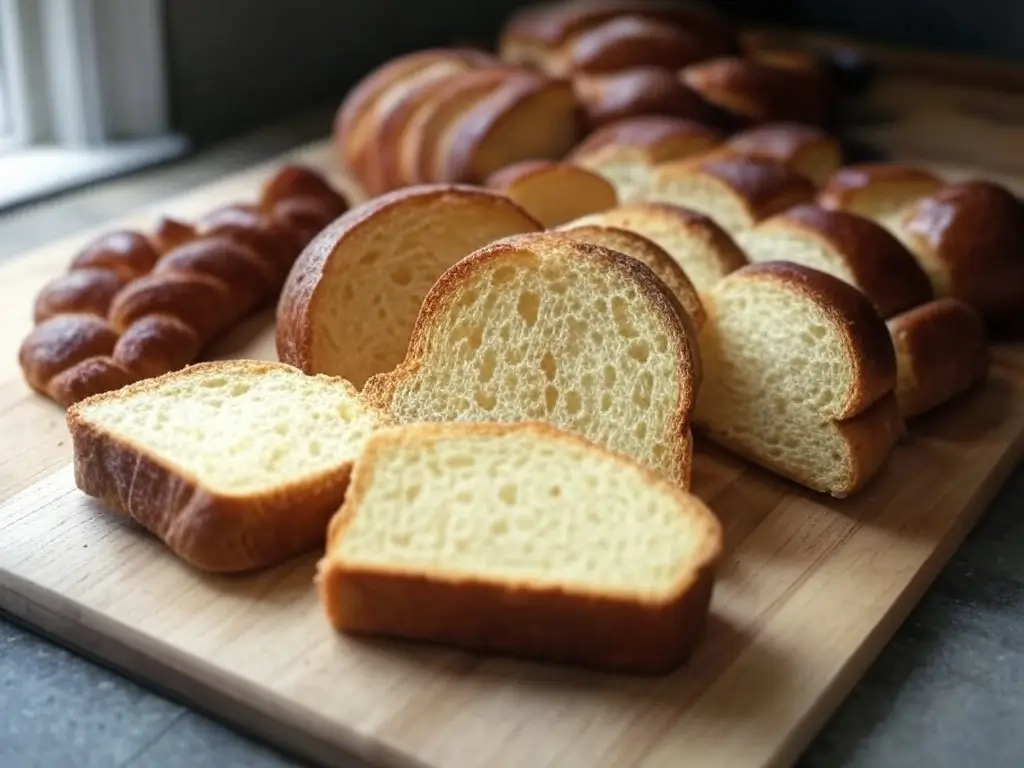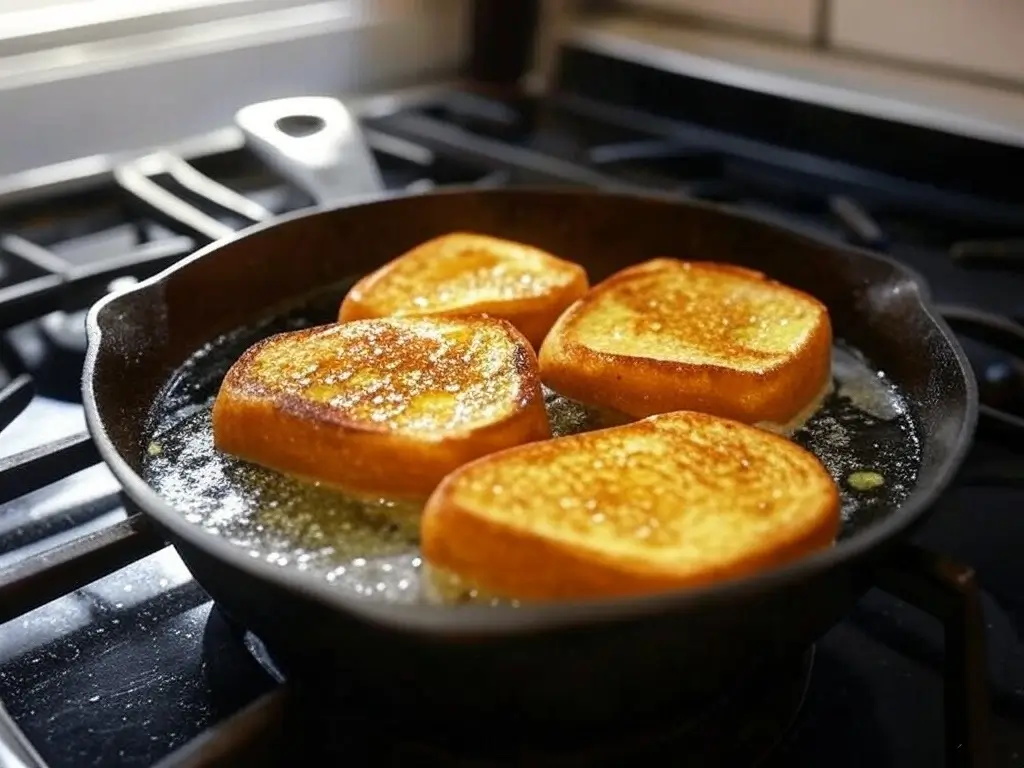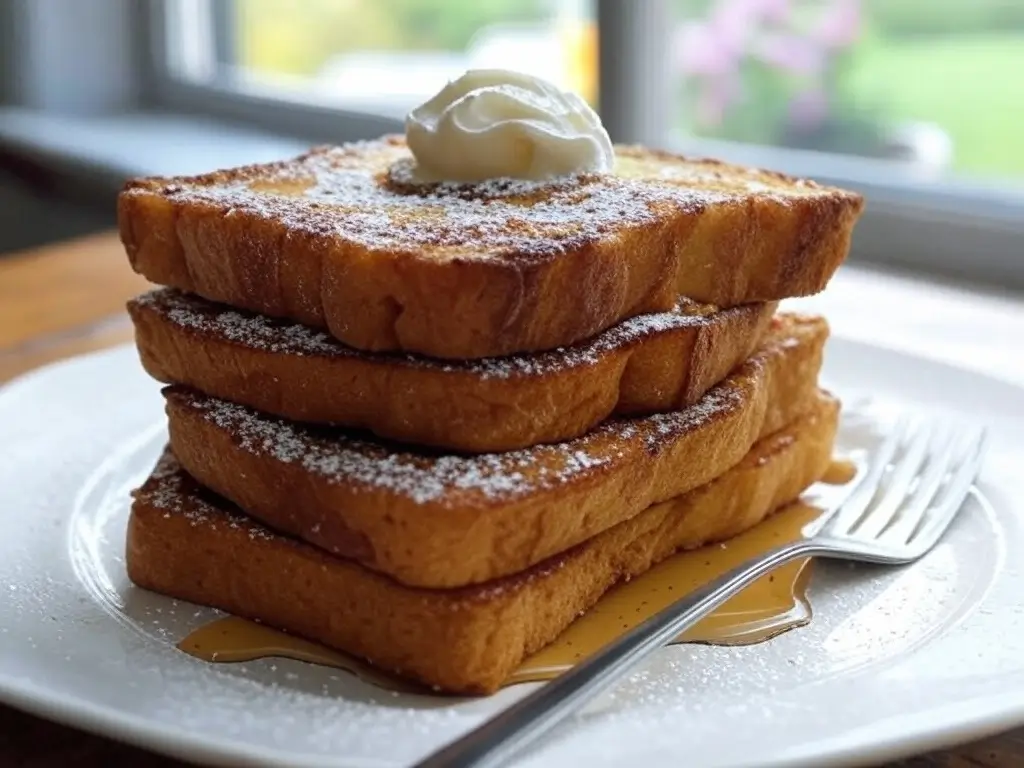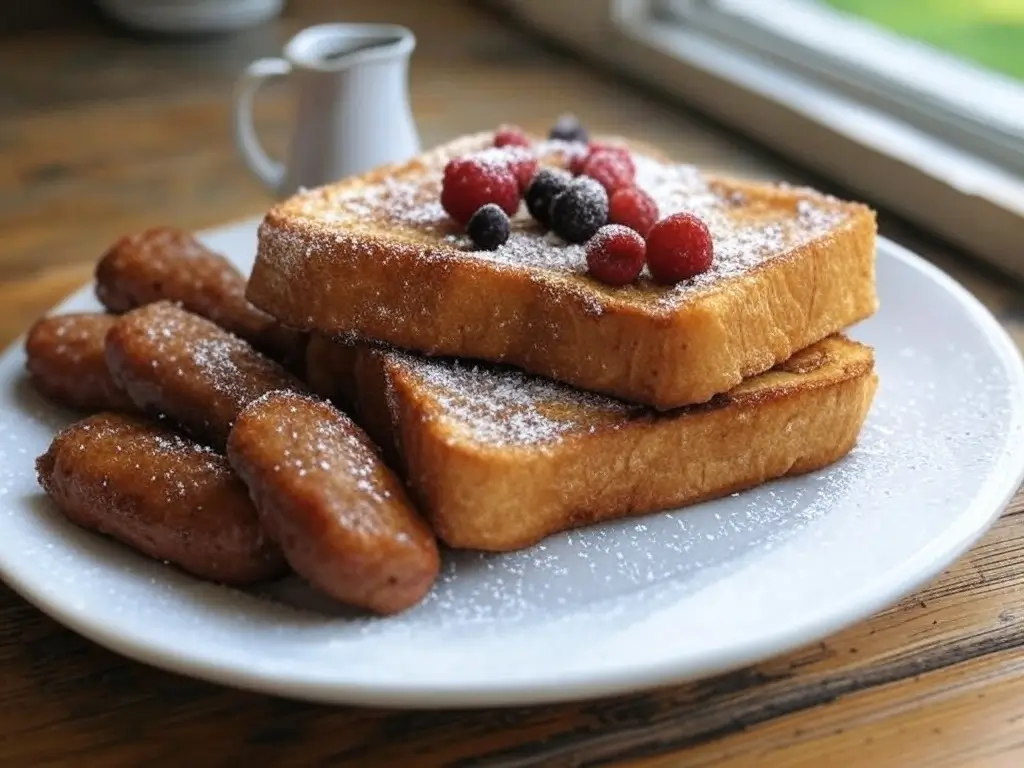Few things compare to the perfect French toast golden brown, slightly crisp on the outside, and soft and custardy on the inside. But if your French toast turns out soggy instead of crispy, you might be missing a few key techniques. Don’t worry! This game-changing recipe will teach you how to get those deliciously crispy edges while keeping the inside light and fluffy.
For even more French toast inspiration, check out our article on Perfecting French Toast: 10 Irresistible Recipes and Tips for a Breakfast. Now, let’s dive into the secrets of crispy French toast!
Why Crispy Edges Make the Best French Toast
There’s something magical about biting into a slice of French toast with crispy edges. Here’s why it’s worth mastering this texture:
✨ The Perfect Contrast of Textures
The best French toast texture balances crispy edges with a soft, custardy center. The crispiness adds structure, preventing the bread from becoming too dense or mushy.
🔥 Better Caramelization & Flavor
Crispy edges develop from the caramelization of sugars in the batter, combined with the right cooking temperature. This creates a deep, rich flavor that’s slightly nutty, buttery, and downright irresistible.
🚫 Common Mistakes That Lead to Sogginess
If your French toast lacks crispy edges, you might be:
- Using too much liquid in the egg mixture
- Cooking at low heat instead of medium-high
- Using thin, soft bread that absorbs too much custard
✅ Keep reading to learn how to avoid these mistakes!
The Best Bread for Crispy French Toast
The type of bread you use plays a huge role in achieving golden brown, crispy edges. Here’s what works best:
🥖 Best Bread Choices
- Brioche: Buttery and rich, with a tender crumb that crisps beautifully
- Challah: Slightly sweet, egg-based bread that soaks up just the right amount of custard
- Texas Toast: Thick and sturdy, perfect for achieving crispy outside, soft inside

💡 Bread Thickness Matters!
Use slices that are at least ¾ to 1 inch thick. Thin slices absorb too much liquid and turn soggy, while thick slices create a crispy crust with a creamy interior.
🥖 Fresh vs. Stale Bread
Slightly stale bread absorbs custard without falling apart. If using fresh bread, toast it lightly before dipping.
The Ultimate Egg Mixture for Perfect French Toast
A great egg mixture creates that crispy outside while keeping the center soft. Here’s what makes the perfect blend:
🥛 Ideal Egg-to-Milk Ratio
- For crispy edges: Use 2 eggs per ½ cup of milk
- For softer texture: Use more milk than eggs
🌿 Flavor Boosters
- Cinnamon & nutmeg: Adds warmth and depth
- Vanilla extract: Enhances the overall flavor
- Maple syrup or sugar: Helps with caramelization for golden crispy edges

✨ Pro Tip for Extra Crispiness
- Cornstarch or heavy cream in the batter creates a slightly crisp crust
- A pinch of salt enhances flavors and balances the sweetness
Cooking Techniques for Crispy Edges
Even with the right bread and batter, the cooking method is what makes French toast crispy and golden brown.
🍳 The Best Pan for French Toast
- Cast-iron skillet: Retains heat well for even caramelization
- Non-stick pan: Works if using lower-fat cooking options

🔥 Butter vs. Oil – Which One to Use?
- Butter: Adds rich flavor but can burn quickly
- Oil (like coconut or vegetable oil): Prevents burning and keeps the toast crispy
- Best option: A mix of both for flavor and crispiness!
⚡ Perfect Cooking Temperature & Timing
- Heat the pan to medium-high before adding the toast
- Cook 2–3 minutes per side until deep golden brown
Toppings & Serving Ideas for the Best French Toast
Now that you’ve mastered crispy French toast, it’s time for the fun part toppings!
🍯 Classic Toppings
- Maple syrup: A timeless choice
- Powdered sugar: Adds a touch of sweetness
- Whipped cream: Light and fluffy contrast

🌰 Crunchy Additions for Extra Texture
- Cinnamon sugar: Enhances caramelization
- Toasted nuts: Almonds, pecans, or walnuts add crunch
🥓 What to Serve with Crispy French Toast
Pair with:
- Turkey sausage or plant-based sausage for a savory contrast
- Fresh berries for a burst of acidity

Final Thoughts
Mastering crispy-edged French toast is all about choosing the right bread, perfecting your egg mixture, and using the best cooking techniques. Now, you’re ready to make French toast that’s golden, crispy, and utterly delicious!
For more French toast ideas, check out Perfecting French Toast: 10 Irresistible Recipes and Tips for a Breakfast. Happy cooking! 🍽️
